Do you have a question about the Sony BRAVIA KDL-46S2010 and is the answer not in the manual?
Welcome and initial guidance for operating the TV.
Details about registered trademarks used in the manual.
Instructions on how to safely replace the fuse in the power plug.
Critical safety precautions to prevent electric shock and fire hazards.
Information regarding the availability and compatibility of digital TV functions.
Verifies all supplied accessories are present before initial setup.
Guides on connecting external broadcast and recording devices.
Instructions for neatly bundling and organizing cables.
Steps to secure the TV and prevent it from falling over.
Selects the display language and geographical region for TV settings.
Automatic search and storage of available TV channels.
Precautions for handling and maintaining the power cord.
Guidelines for protecting the mains lead from damage.
Information for TV sets with a three-wire grounding AC plug.
Recommendations for using official Sony accessories.
Safety measures during TV installation, including wall mounting.
Avoidance of interference with medical equipment.
Instructions for safely transporting the television set.
Importance of proper airflow to prevent overheating.
Guidelines for choosing a safe and suitable location for the TV.
Warnings against exposing the TV to water and moisture.
Do not insert objects into ventilation holes.
Keep flammable materials and heat sources away from the TV.
Avoid placing the TV in environments with oil or excessive dust.
Ensure the TV is on a stable surface and not climbed on.
Prohibitions against installing the TV in vehicles or hanging from ceilings.
Warnings against using the TV on ships or in marine environments.
Avoid direct sunlight and outdoor installation.
Precautions for managing cables and avoiding tripping hazards.
Safe methods for cleaning the TV and its plug.
Do not touch the TV or leads during lightning storms.
Actions to take if the TV screen cracks.
Entrust servicing to qualified personnel only.
Keep small accessories away from children.
Do not throw objects at the TV screen.
Recommendation to disconnect from mains when not in use.
Advice on optimal viewing distance and lighting.
Adjust volume to avoid disturbing neighbours.
Do not connect too many appliances to one socket.
Do not touch the hot surface of the TV.
Measures to prevent corrosion in humid or seaside environments.
Proper techniques for lifting and moving the TV.
Guidelines for protecting the LCD screen surface.
Details about the TV's light source and replacement.
Avoid extreme temperatures and ensure proper disconnection.
How to handle and clean the screen and cabinet surfaces.
Instructions for environmentally responsible disposal of the TV.
Buttons for standby, input selection, and menu navigation.
Buttons for changing channels, volume, and muting.
Buttons for EPG, text, picture freeze, and screen modes.
Button to access various viewing and adjustment options.
Description of physical buttons on the TV set.
Meaning of the TV's status indicator lights.
Steps to turn on the TV and select channels or modes.
Understanding icons and information displayed in digital mode.
How to use teletext services.
Freezing the TV picture to view details.
Adjusting the picture aspect ratio for different broadcasts.
Additional advice on screen format settings.
Accessing advanced viewing options via the TOOLS button.
How to browse programme listings.
Filtering programmes based on categories like 'Favourite' or 'News'.
Scheduling recordings for programmes using the timer.
Scheduling alerts for upcoming programmes.
Manually setting timers for VCR recording.
Cancelling or viewing scheduled recordings.
Adding preferred channels to a custom list.
Adding, removing, or turning off the favourite list.
Connecting devices via scart lead for picture display.
Selecting input sources for VCRs and other devices.
Viewing a list of available input signal types.
How to access and operate the TV's menu system.
Descriptions of main menu categories like Favourites, Programme List, and Settings.
Applying picture settings to all or current inputs.
Choosing preset picture modes like Vivid, Standard, or Custom.
Adjusting backlight, contrast, brightness, colour, and hue.
Modifying the colour tint for white balance.
Adjusting picture sharpness and reducing video noise.
Fine-tuning picture with black corrector, gamma, and colour enhancement.
Applying sound settings to all or current inputs.
Choosing sound profiles like Dynamic, Standard, or Custom.
Adjusting audio frequencies and stereo balance.
Enabling virtual surround sound effects.
Utilizing BBE system for improved sound quality.
Choosing stereo or bilingual audio options.
Managing internal speakers when headphones are connected.
Adjusting the audio volume for headphones.
Applying screen settings to all or current inputs.
Changing aspect ratios like 4:3, Wide, or Zoom.
Automatically adjusting screen format based on broadcast signal.
Setting default screen modes for 4:3 broadcasts.
Adjusting picture size and position.
Initiating the first-time setup process again.
Setting display language and preset input names.
Configuring sleep timer and on timer functions.
Setting the TV to turn on automatically at a specific time.
Reducing power consumption through various settings.
Optimizing picture based on ambient light.
Configuring audio/video signals for output sockets.
Managing internal speakers and selecting colour systems.
Viewing TV info and resetting setup settings.
Adjusting screen display for PC input.
Automatically aligning PC display position and phase.
Manual adjustments for phase, pitch, and shift for PC input.
Setting the TV to standby when no PC signal is detected.
Enabling direct channel selection using one button.
Retuning analogue channels.
Rearranging the order of analogue channels.
Assigning custom names to channels.
Manually tuning and storing channels.
Adjusting picture fine-tuning and audio quality.
Skipping unused analogue channels.
Retuning digital channels.
Removing or reordering digital channels.
Manually tuning and storing digital channels.
Configuring subtitle display and audio language options.
Setting age restrictions and managing PIN codes.
Software updates, system information, and time zone settings.
Setting up a CAM for Pay Per View services.
Connecting CAM, camcorders, and headphones to side ports.
Connecting PCs, satellite receivers, DVD players, game consoles via rear ports.
Adjusting picture and sound modes for PC input.
Fine-tuning PC display position and auto clock settings.
Details on screen size, resolution, and power requirements.
Information on supported video systems and channel frequencies.
Description of available input/output ports and their specifications.
Physical characteristics including weight and size.
Specifies the audio output wattage.
Lists included accessories and available optional items.
Chart detailing compatible PC resolutions and frequencies.
Common issues with picture display and their remedies.
Common issues with audio output and their remedies.
Common issues related to channel selection and reception.
Troubleshooting for power, input sources, and remote control.
| Screen Size | 46 inches |
|---|---|
| Display Technology | LCD |
| Resolution | 1366 x 768 |
| Aspect Ratio | 16:9 |
| Contrast Ratio | 1300:1 |
| Brightness | 500 cd/m² |
| Response Time | 8 ms |
| HDMI Ports | 2 |
| Component Video Input | 1 |
| Composite Video Input | 1 |
| S-Video Input | 1 |
| PC Input | 1 |
| Speakers | 10W x 2 |
| Viewing Angle | 178° |
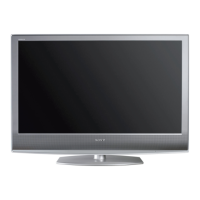

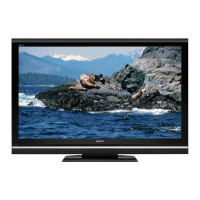
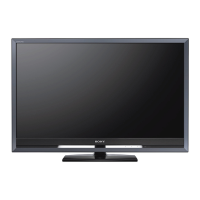
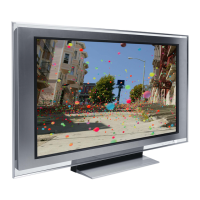


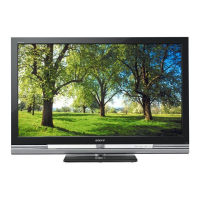
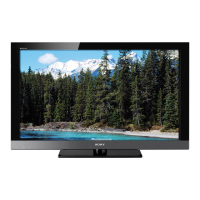
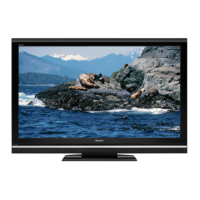
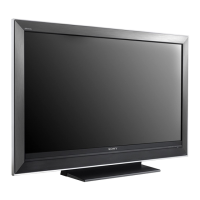

